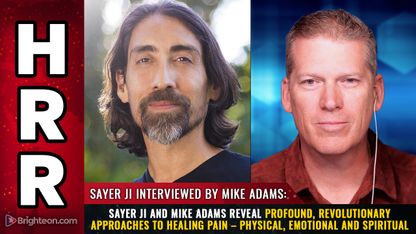Triclosan and other chemicals from toothpastes accumulate on nylon bristles, exposing users to uncontrolled release of the antimicrobial chemical
03/20/2018 // Jessica Dolores // Views

- While research has proven that triclosan can disturb hormones in both animals and humans, contributing to antibiotic resistance, as well as harm organisms in the water, it is still used as an ingredient in toothpaste because it can reportedly reduce gum inflammation, plaque, and cavities. It can also be used in clothing, cookware, and other products.
- As such, triclosan can be released uncontrollably and create a hidden route that exposes the user to its effects. It can migrate to areas which have not been considered before.
- In doing the study, the research team simulated brushing with various commercial brushes and toothpaste.
- They found out that more than one-third of the 22 toothbrushes tested had triclosan which amounted to seven to 12 doses of the volume used for every brush.
- Toothbrushes with "polishing cups" or cheek/tongue cleaners with elastomers contained the most copious amounts of triclosan.
- After researchers used triclosan-free toothpaste but continued to use the same brushes, triclosan stayed on the toothbrushes for the next two weeks. This could prolong the user's exposure to triclosan, even after he or she used another toothpaste.
- Dumping used toothbrushes with triclosan into landfills may lead to chemical leaching into the environment.
More questions need to be answered about the design of consumer products — especially those for personal care — with absorptive polymer elements for use as chemicals, researchers concluded
Journal Review:
Han J, Qiu W, Campbell EC, White JC, Xing B. NYLON BRISTLES AND ELASTOMERS RETAIN CENTIGRAM LEVELS OF TRICLOSAN AND OTHER CHEMICALS FROM TOOTHPASTES: ACCUMULATION AND UNCONTROLLED RELEASE. Environmental Science & Technology. 2017;51(21):12264–12273. DOI: 10.1021/acs.est.7b02839
Latest News
Related News
11/21/2023 / By Ethan Huff
11/21/2023 / By Olivia Cook
11/20/2023 / By Cassie B.
11/20/2023 / By Ava Grace
11/20/2023 / By Ethan Huff
Take Action:
Support Natural News by linking to this article from your website.
Permalink to this article:
Copy
Embed article link:
Copy
Reprinting this article:
Non-commercial use is permitted with credit to NaturalNews.com (including a clickable link).
Please contact us for more information.
Please contact us for more information.





















